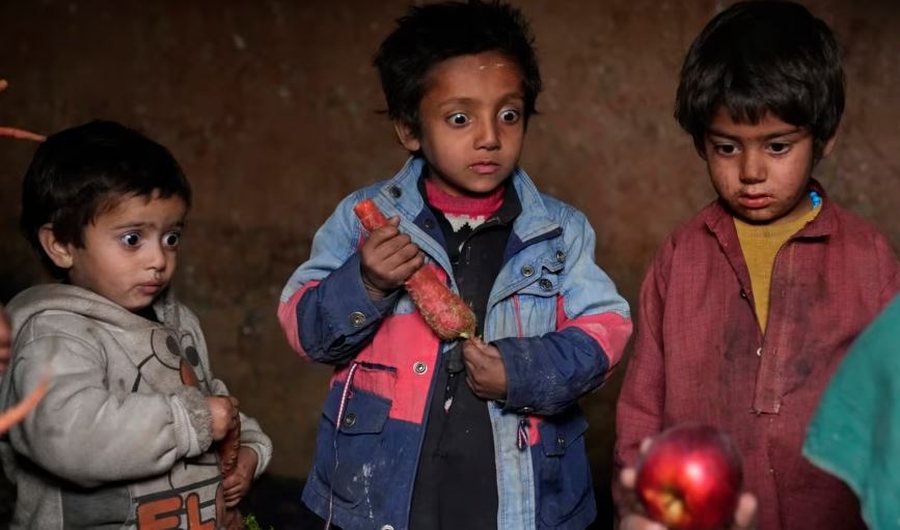
Afghanistan is sliding towards famine, warn aid workers working in one of the world's biggest humanitarian crises.
Millions of Afghans already live in famine-like conditions, and a permanent halt to American aid could only make the situation worse.
This is according to two humanitarian workers, who spoke to Radio Free Europe on condition of anonymity, as they were not authorized to speak to the media.
Both work for large international organizations, which provide food aid to vulnerable communities in Afghanistan.
"There is already widespread hunger in some corners of Afghanistan," says one of them, who is based in southeastern Afghanistan.
"Hunger in most places"
The Taliban's takeover of power in 2021 exacerbated a major humanitarian crisis in Afghanistan. As a result, the impoverished country lost vital Western aid and its economy collapsed.
Famine, meanwhile, was averted thanks to substantial funding from Western donors. However, this aid has been significantly reduced in recent years.
About a third of Afghanistan's 40 million population currently faces hunger.
Fears of famine have grown since United States President Donald Trump's decision in January to temporarily freeze all aid to foreign countries, including Afghanistan.
A permanent cutoff of aid from the US - the largest donor to Afghanistan - would push the country towards full-scale famine, aid workers warn.
"Without humanitarian aid, there could be famine in most countries," the aid worker says.
According to him, the arid western, central and northern provinces of Afghanistan are the most at risk.
But some aid workers and other organizations say it is still too early to say that Afghanistan is in famine-like conditions, or heading towards famine.
The Integrated Food Security Phase Classification (IPC) defines famine as “a situation in which at least one in five households has extreme food shortages and faces hunger and poverty, resulting in extremely critical levels of acute malnutrition and death.”
The IPC estimates that over 3 million Afghans - or less than 10 percent of the population - suffer from emergency levels of food insecurity and are one step away from starvation.
Emergency levels of food insecurity
The Taliban government, which is not recognized by any country, was unable or did not try to address the humanitarian disaster.
This led the UN and international NGOs to fill the gap.
These organizations currently distribute food to millions of Afghans, including cooking oil, rice, and flour. They also provide fertilizers, seeds, and other tools for use in agriculture.
Without this support, farmers will find it difficult to produce enough food for their families and communities.
"Without aid, I could see mass starvation within months," one aid worker tells Radio Free Europe.
Children and women are the most vulnerable. An estimated 3.5 million Afghan children under the age of five “suffer or are projected to suffer” from acute malnutrition, according to the IPC.
Hospitals across Afghanistan are filled with malnourished children.
Doctors warn of increased child mortality if they lose international support to treat hungry children.
"The food crisis in Afghanistan is alarming," says Terje Watterdal, director of the Norwegian Afghanistan Committee (NAC).
"Gloomy" future
Humanitarian aid to Afghanistan has declined sharply since 2022, when international donors raised about $3.8 billion. In 2024, funding fell by about 25 percent, compared to the previous year.
The United States was the largest donor, contributing about $3.7 billion as of 2021, according to the Special Inspector General for Afghanistan Reconstruction - a US government watchdog.
But the Trump administration's decision to freeze all aid to foreign countries has put future US aid in question.
"Donors are reducing their support this year, so the outlook for the future is bleak," says Watterdal.
The hunger crisis in Afghanistan was also exacerbated by climate change and mass displacement.
The country is among the most vulnerable in the world to the effects of climate change and has experienced several extreme weather events in recent years, including deadly earthquakes, floods, and droughts.
"Environmental changes are contributing to food and water insecurity," says the latest report from the UN's International Organization for Migration (IOM).
Trucks carrying Afghan refugees and their belongings make their way from Pakistan to Afghanistan, following a decision by the Pakistani government to deport all undocumented Afghans.
In the last two years, meanwhile, Iran and Pakistan expelled about 3 million Afghan refugees and immigrants to their homeland.
The two countries warned that they plan to deport millions more.
Many Afghan returnees find it difficult to find adequate housing, access healthcare services, or secure enough food to eat.
"Afghanistan is suffering from a climate crisis, an economic crisis, a social crisis, a health crisis, a food crisis and a political crisis," says Watterdal, a Norwegian aid worker./ REL (A2 Televizion)











